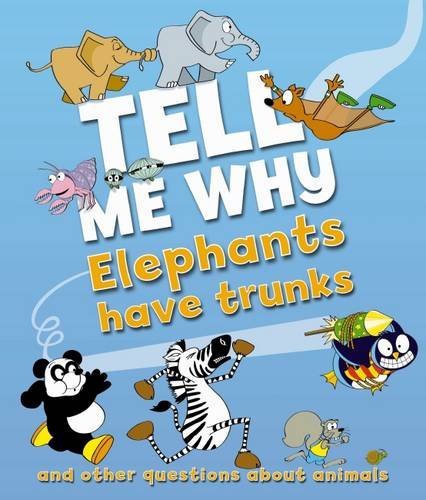Elephant Body Signals
Category : Majestic Elephants

The Language of Elephants by Joshua Scott
Elephants use their heads, eyes, mouth, ears, tusks, trunk, tail, feet and even their whole body to signal messages to one another and to other species. For example, a threatening or dominant elephant signals her status by appearing larger, carrying her head high above her shoulders and spreading her ears, while a subordinate elephant carries his head low and his ears back. A frightened or excited elephant raises her tail and chin. A socially excited elephant lifts and rapidly flaps her ears and widens her eyes.
Tails: Just like a dog, when an elephant’s tail is swishing from side to side swatting away flies, it is happy. As soon as the tail goes stiff, normally held out to one side, it means that the elephant is anxious. At this point it may even start to run from you, normally swivelling over its shoulder to keep an eye on you as it tries to get away.
Eyes: An elephant’s eyes can tell you an incredible amount. Just think of humans, when we are stressed, excited or scared our eyes open wider. This is part of the reaction to the release of adrenaline in our bodies and better enables us to handle the perceived threat. This is exactly the same for elephants. If an elephant approaches you with lazy, almost half closed eyes and its tailing swishing slowly from side to side, it is a good sign this animal is very relaxed.
Ears: The elephant is merely cooling itself down when its ears are flapping. It has huge, fat veins that run beneath the thin skin of the ear and as they flap their ears against the wind, they cool the blood and therefore their overall body temperature. The time to be weary is when an elephant turns and faces you head on, with its ears extended and held out at its sides (normally with its head held high and trunk and tusks raised). The elephant is trying to make itself look bigger and intimidate you.
Rumbling: Most of the noises elephants emit are at frequencies we can’t even hear. However, this comforting, low rumbling sound we are lucky enough to hear is the elephants communicating with each other, so sit quietly and enjoy it.
Trumpet: This is generally not a good sign and usually signals distress. Even if it is just a youngster trumpeting, who doesn’t pose a threat to you, the trumpet will usually summon its mother in a matter of seconds who will more than likely blame you for its child’s temper tantrum.
Head shake: This is when an elephant picks its head up high and throws it back down in an arc, creating a big noise as its ears slap against its body and a billow of dust pours off its head. It is intimidating and that’s exactly why the elephant does it. If the elephants does this and moves off, then you are safe to continue watching the herd, however if it does this in conjunction with wide eyes, turns to approach you with ears extended, back arched and tusks held high then it is in your best interest to heed that elephant’s warning.
Verbal communication between elephants is surprisingly common, compared to many other mammals. They make a wide variety of gurgling noises in the backs of their throats, and of course can also produce a loud ‘trumpeting’ sound via their trunks. These are usually warnings, either that danger is approaching or that the trumpeting elephant is getting ready to charge its perceived assailant.
Softer noises are used soothingly or affectionately between elephants, most often from a mother to her calves when they are exhibiting signs of distress.
Like all mammals, elephants communicate a great deal through body language. Affection is often expressed by intertwining or ‘hugging’ trunks, usually between close relatives and friends who have travelled in the same herd for a long time.
A female elephant will signal her acceptance of a potential mate by rubbing her body full against his, and much tactile communication takes place with the prehensile ends of an elephant’s trunk – they use these to comfort and reassure each other, to greet friends, and to acknowledge the feat of a labouring mother or the presence of new calves.
When a member of the herd is close to death, the whole herd will stop moving and stay resting in one small area for a time. Once the elderly or sick elephant passes, they will stay on for a few more days – gathering semi-frequently around the corpse, and seeming to keen and grieve for their deceased companion.
If a travelling herd comes upon a dead elephant while making their journey, they will all gather around him or her – even if she was clearly a complete stranger to them – and take a few moments of silence before moving on, generally touching the body with their trunks as though they are making a show of reverence.
Elephants are highly social animals. Touching each other is an especially important form of social contact.In the wild, elephants live in complex multi-tiered societies. Each individual has some close companions and a wide network of other acquaintances.
As in all social species, growing up in a social group enables the young to learn how to use the proper social signals in each context. Even though the need for social contact is innate, many of the specific sounds, gestures and other social signals require learning.
In captivity, many calves are reared without full contact with a social group. In several countries, it is still common to wean calves from their mothers at an early age, already at one to three years.
In many cases, the weaned calf is therefter kept without opportunities to touch other elephants. In such an environment, the social skills of the calf remain to some extent impaired, as it has not had an opportunity to learn the wide repertoire of social signals used by elephants.The well-being of captive elephants would be remarkably improved if the calves are allowed to remain in social contacts with their mothers.

Tell Me Why: Elephants Have Trunks And Other Questions About Animals
The trunk has a central role in elephant-to-elephant interactions. They caress each other’s foreheads and temples with the trunk tip, wrap their trunks around each other’s heads, intertwine trunks and so on. Trunk interaction is therefore also an important part of human-elephant contact. Gently stroking the trunk is one of the best ways to help an elephant relax.
It is important to bear in mind that in the elephant world, caressing and touching each other is for familiar individuals only. Many elephants feel uncomfortable in close proximity with unfamiliar people, and even more uncomfortable if these try to touch – regardless of how much the person in question loves elephants. In most cases, the best way to show one’s love for an elephant is to allow the elephant keep a comfortable distance from the unfamiliar person who, from the elephant’s point of view, is a stranger.
If you have any information,questions, or feedback you would like to include in this post.
Please email momo19@naturekingdoms.com or leave your comments below.
5 Comments
mink lashes amazon
July 1, 2018 at 4:41 pmmink lashes amazon
Greetings! I know this is somewhat off topic but I was wondering if you knew where I could find a captcha plugin for my comment form? I’m using the same blog platform as yours and I’m having problems finding one? Thanks a lot!
Maureen
July 2, 2018 at 11:26 amHello have you tried Contact Form 7 plugin as this should be compatible with your blog platform.Hope this helps!
JUDE KEEN
April 14, 2019 at 2:26 amI am fascinated by elephants and especially the complexities of their social behaviour. I have noticed that (especially) during reunions between related or close ele-friends, they will often make a point of placing their trunks directly into each others’ ears. It seems to be more than just the general touching of head areas etc. during meet-ups. It seems to be something special.
Candiance Palamidy
November 23, 2020 at 6:38 amI live in a state with 2 asian elephants that I have communicated with for a few years now.. First time I visited them I noticed the elephant in front was disconnected emotionally… I stood there and talked to him very softly and he came into his eyes and our eyes locked, I felt like I was going to throw up and felt a happiness I couldn’t explain… I could feel everything he was feeling… This elephant and its roommate were ROCKING BACK AND FORTH, they are so emotionally hurting..I’ve heard it said that they do this in capture, as if it has nothing to do with their emotional state… It HAS EVERYTHING TO DO WITH THEIR EMOTIONAL STATE!!! In this same first visit I saw how the care takers deals with them.. I was OUTRAGED!! They were damandended to put their heads in a post as if being PUNISHED…This I won’t say CARE taker but motionless being that has cared for them for 5 years and there is NO bond between them.. This to me is alarming… these elephants are social creatures and you would think that someone taking care of 2 amazing creatures would have a special bond with them, but it was more like they dislike them… I want to change these lives… I have ideas how a zoo that already has elephants could make life happier for them and bring more money to the zoo.. I am a very passionate person and believe we fix what we can in our immediate lives and I need someone to listen… I am a survivor of many traumas and see life through a different lens even with all the BAD in the world… If someone could direct to me to a person who would care to listen I would be grateful.
momo19
November 23, 2020 at 1:29 pmI am really sorry to hear about this awful treatment to two wonderful animals.
God is really really angry about animal mistreatment and will severely punish those people who hurt any type of animal.